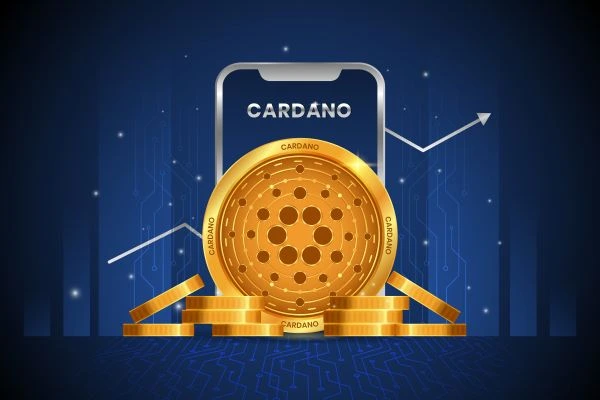Cardano Story
Cardano operates on the Ouroboros protocol, a proof-of-stake model that avoids the high energy consumption associated with Bitcoin mining. ADA holders can stake their tokens, help secure the network, and earn rewards in return.
The network’s 1.3 million staking addresses mark a sharp increase in user activity. Daily active addresses have jumped 58% since Q4 2024, according to data from Messari.
Meanwhile, Ethereum’s staking growth has slowed, even as Obol validators recently pushed through more than 558,000 ETH. Cardano’s staking model is particularly accessible.
It avoids lockup periods and slashing penalties, making it more appealing to retail users. When Bitstamp enabled ADA staking for UK customers in May, European participation climbed noticeably.

Over 1,220 delegated representatives (DReps) now participate in Cardano’s governance system, a development that followed the Chang and Plomin hard forks rolled out earlier this year. These protocol upgrades transferred more control to the community, marking a shift toward deeper decentralization.
- The network is also seeing a sharp rise in activity, with daily transaction volumes reaching $684.6 million.
Cardano’s momentum stems from several intertwined factors. Its layered architecture separates transaction processing from smart contract execution, enhancing both scalability and security. Ongoing upgrades to Hydra, the network’s scaling solution, are expected to significantly increase throughput this year.
These improvements place Cardano in direct competition with faster chains like Solana, which, despite trading above $159, still trails in staking expansion.
The DeFi sector has also played a key role in Cardano’s growth. Total value locked (TVL) on the network has surpassed previous records. A notable catalyst was the June launch of the Cardinal Protocol, which opened up Cardano’s DeFi capabilities to Bitcoin holders, without the need for custodians.
By tapping into Bitcoin’s $1 trillion market, the protocol introduces new liquidity opportunities and extends Cardano’s influence into the emerging BTCFi space.
However, not all developments have been without controversy. Charles Hoskinson’s recent proposal to convert $100 million worth of ADA into Bitcoin and stablecoins, aimed at reinforcing the platform’s reserves, drew criticism from some within the community. The move sparked governance concerns and contributed to a 6% drop in ADA’s price.
Market Moves and Whale Behavior
ADA got a boost in Q2 when it was added to the Nasdaq Crypto Index, helping push trading volumes up by more than 65%. Big holders haven’t sat still either; wallets with between 1 million and 10 million ADA grabbed around 400 million tokens just this week.
Still, about 270 million ADA moved out of major addresses, hinting that some investors are locking in profits.
Even with that back and forth, Cardano’s holding steady. Solana’s price has been flat, and Ethereum’s seen heavier whale activity, with about 350,000 ETH hitting exchanges recently. By comparison, ADA looks relatively stable in the current market shuffle.
ADA is currently trading at $0.64, up 3% this week but still below its 20-day moving average of $0.675. It recently cleared resistance at $0.635. Analysts are now watching the $0.70 level, which could open the path to retesting recent highs near $0.73.
Staking pool operator Sssebi has projected a year-end price of $10, citing momentum from ETF speculation and an upcoming airdrop tied to the Midnight side-chain. Dubbed the “Glacier Drop,” it could introduce millions of new ADA wallets across eight blockchains, as outlined in Hoskinson’s latest AMA.
Still, risks remain.
- Governance debates and whale outflows could weigh on price movement. Without broader altcoin momentum, ADA might remain range-bound.
- Bitedge analysts have noted bearish signals in Ethereum as over $850 million in ETH was recently moved to exchanges, indicating broader market caution.
What This Means for ADA Holders
The 1.3 million staking address milestone signals growing confidence among ADA holders. Combined with whale accumulation, it suggests potential price support, especially if market conditions improve.
With over 70% of supply staked, ADA’s low float could amplify price moves in either direction. While strong staking numbers don’t guarantee rallies, Cardano’s case is notable: large holders are buying quietly, not chasing hype.
Regardless of whether Hoskinson’s vision plays out, over a million users are actively securing the network and earning rewards, not just sitting on their tokens. That level of engagement is rare, especially at a time when ADA trades well below its peak.
The coming months will test whether this is smart positioning or misplaced optimism. For now, the conviction behind Cardano is hard to ignore.
He has worked with several companies in the past including Economy Watch, and Milkroad. Finds writing for BitEdge highly satisfying as he gets an opportunity to share his knowledge with a broad community of gamblers.
Nationality
Kenyan
Lives In
Cape Town
University
Kenyatta University and USIU
Degree
Economics, Finance and Journalism


Facts Checked by Will Wood



 Fact checked by
Fact checked by 
 eabungana@gmail.com
eabungana@gmail.com 